To make cheese at home is quite simple: you need to choose the right recipe, acquire a form and strictly observe the manufacturing technology. There are many types of cheese, the unique taste of which is obtained due to a certain ratio of moisture and the consistency of the finished product: from soft pickled Suluguni cheeses to hard Parmesan. Making cheese yourself at home, you can be completely sure of the excellent quality of the finished product.
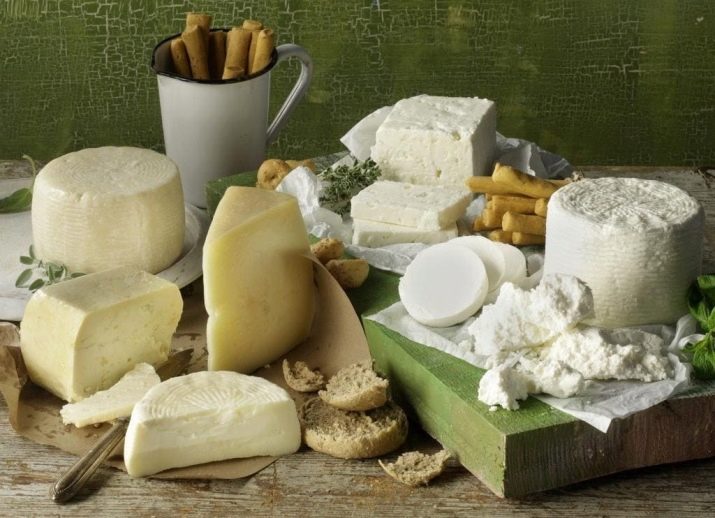
Features
The cheese container should be as smooth as possible, strong, withstand press pressure and temperature extremes. The bowl for the preparation of cheese delicacies should be made of heat-resistant food grade plastic with increased strength or high-quality stainless steel and not react with whey. Plastic molds can be used for the following types of cheese:
- semi-solid (Kostroma, Gouda, Roquefort with mold) - the temperature of their preparation is about +30 degrees;
- sour-milk (Adyghe, Creamy, Lithuanian) - with cold fermentation + 21– + 27 degrees and warm fermentation up to +32 degrees.
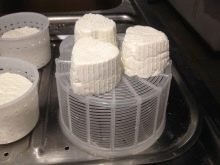
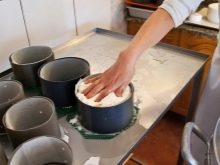
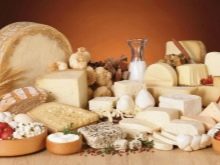
Stainless steel bowls are used to make cheeses such as:
- solid (Parmesan, Edam, Russian) - the cooking temperature is + 40– + 50 degrees at high pressure;
- brine (Feta, Suluguni, Brynza) - with a cooking temperature of about +60 degrees;
- soft (Brie, Camembert, Dorblu, Riccott) - they are made with the addition of cream and are self-pressed, the cooking temperature reaches + 72– + 75 degrees.
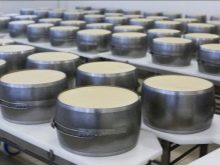

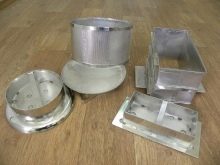
The form for creating any kind of cheese must have perforation: the taste and consistency of the finished product depend on the size and location of the holes. The less moist the cheese, the higher the concentration of calcium and nutrients in it. The most valuable in terms of nutrients are cheeses like Parmesan, which literally crumble when sliced.

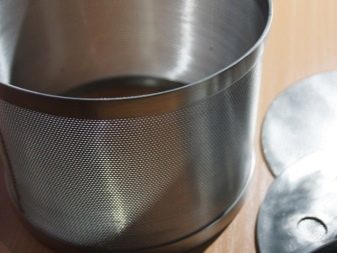
The diameter and location of the holes in the mold affect the consistency, speed of runoff of whey and the speed of maturation of the finished product.
For pressing cheese you need a special absolutely smooth lid, they are thick and flat (the main pressure on the center of the lid) or with an adapter. The adapter must be durable, easily withstand the pressure of the press, but not give an unnecessary load on the cheese (most often the adapters are hollow inside). A wooden lid, excess cargo can irreparably ruin the taste and texture of the cheese.
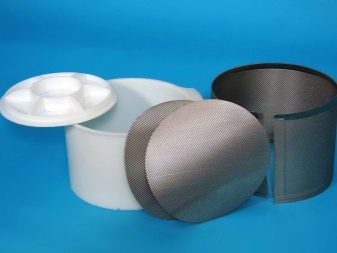
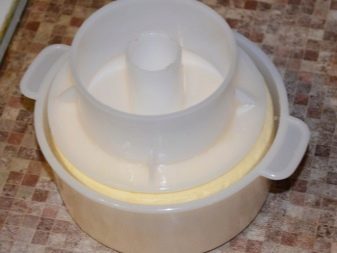
Special presses are best.. Pressing - this is a necessary stage in the manufacture of cheese products, the essence of which is to remove intergranular moisture, compaction and shaping the head.
Self-pressing - removal of moisture by inverting the form, there is no pressure on the cheese, excess moisture flows naturally. Tissue pressing - the cheese mass is wrapped in a special drainage tissue and promotes proper fluid drainage. Tapeless pressing - when using a perforated form for cheese, you can do without drainage tissue, and the head will turn out smooth and even.

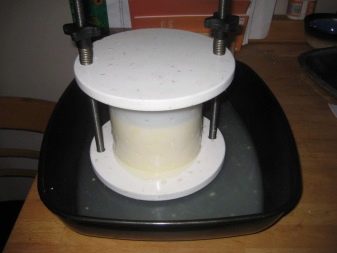
The step of pressing the cheese head can last from 2 to 18 hours, depending on the recipe selected. Pressing must be done smoothly, increasing the pressure daily according to the manufacturing technology of a certain type of cheese. If the pressing is accelerated, a dense crust of deformed cheese grain is formed on top, which will block the excess liquid and the cheese will be spoiled, will not be able to ripen.
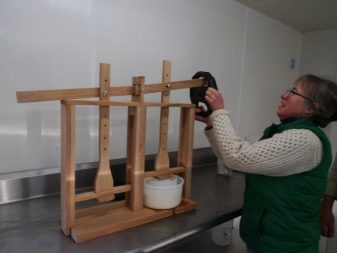
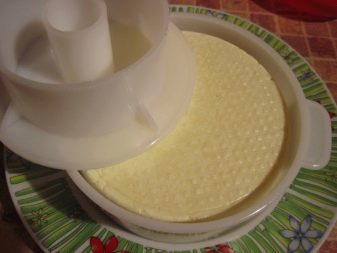
It is important not only to properly prepare the head, but also to allow the finished product to ripen the necessary period of time in the storage conditions indicated in the recipe.
Types, materials and sizes
According to the technology of preparation, each type of cheese is prepared in a form with a certain type of perforation, namely:
- peas - intended for the manufacture of hard smooth cheeses: a form with a round base and rare holes, as well as with a minimum number of holes on the walls and bottom;
- tartlet - suitable for making cottage cheese and soft varieties, similar in shape to a paper basket: it has a round base, frequent elongated rectangular vertical holes that well clumps;
- cylinder - It is used for noble varieties of cheese (Camembert, Cacciotta, Brie, Reblochon), has small frequent perforation in the form of squares;
- sieve - to prepare the finished product as gentle as possible in consistency, it resembles a bucket in shape (with a long handle), small, very frequent perforations, most often holes in the form of squares, clots flow slowly and evenly;
- cones - quite rare holes located in even rows at a distance of about 1 cm from each other, this type of bowl is suitable for hard and semi-hard cheeses (Cheddar), you must additionally use a drainage bag;
- pyramid - trapezoidal container with rare openings, suitable for the preparation of unique French cheese Valence;
- bricks - horizontally located frequent rectangular openings, the bowl is narrowed down, has a pialoid shape, is intended for the preparation of curd cheeses (medium soft), whey from this form drains most quickly;
- mesh - square shape with frequent transverse rectangles, for brine and semi-soft cheeses (Suluguni, Caccotta);
- spider web - transverse stripes are arranged in a circle, in the center at the bottom of the "flower", high sides without holes, a long handle, the pattern resembles a cobweb in appearance; excess moisture is easily removed, suitable for making Mozzarella.
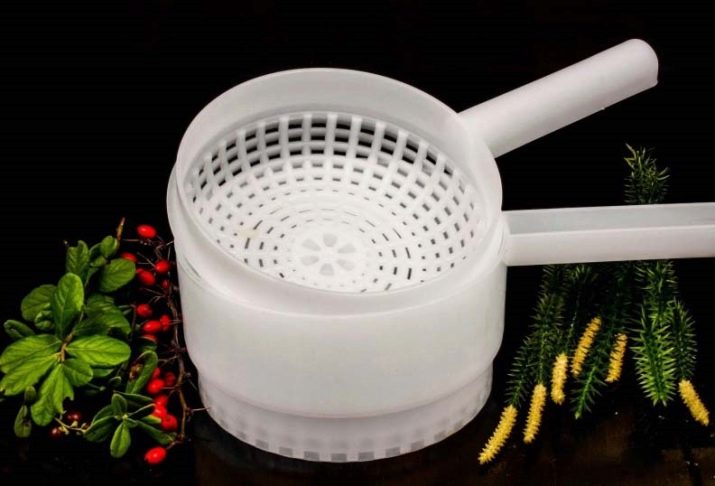
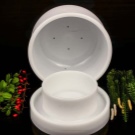
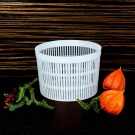
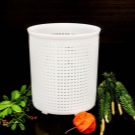
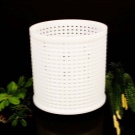
The size of the mold for cheese depends on the variety of the finished product, for example:
- Adyghe: diameter - from 18 to 22 cm, height - 5–6 cm, cylindrical shape;
- Dutch: length - up to 30 cm, width - up to 15 cm, bar shape;
- Edam: the diameter of the ball is 10 cm.
Materials: plastic and metal (stainless steel).
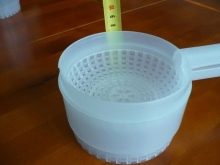
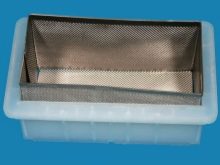
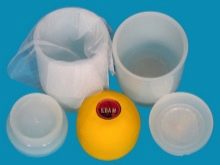
How to choose?
The form must be selected depending on what kind of finished product you need to get in the cooking process. It is worth noting the following main selection criteria:
- bowl material (metal or plastic);
- Wall thickness;
- type of perforation;
- what pressure the capacity withstands.

Molds for large heads (5-6 kg) are intended mainly for self-pressing cheeses, which must be often turned over, so they must have increased strength and wear resistance. The market presents forms of various manufacturing countries: Russia, Holland, Italy and so on (before buying it is advisable to request a quality certificate from the seller).
It is not recommended to buy Chinese forms, they are often made of substandard materials and are made in violation of standards, because the production of cheese products is not widespread in China.
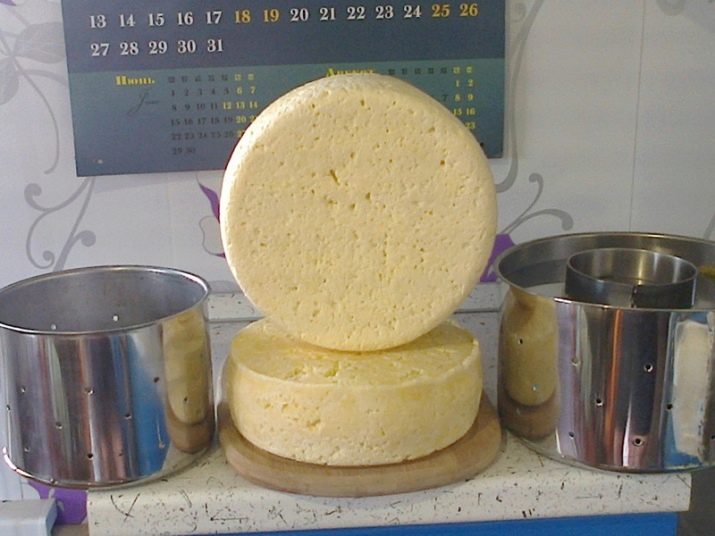
The presence on the form of cracks, strips, nicks, dents or inclusions will spoil not only the appearance of the head, but also disrupt the cooking process, as the pressure becomes uneven, as a result of which the product is compressed and matures incorrectly.
Usage Tips
Instead of special forms, you can use a regular colander and cheesecloth for cheese, but it is possible to cook only some varieties of this delicious delicacy. Cheese should be prepared with pressure, therefore, it is recommended, in addition to the form, to use a special press. The press for manufacturing at home consists of several parts: frames, baskets, plates, pistons, drainage bags.
Hand presses are as convenient and effective as possible, they do not require an additional power source, are compact and easy to operate, and are recommended for use at home.
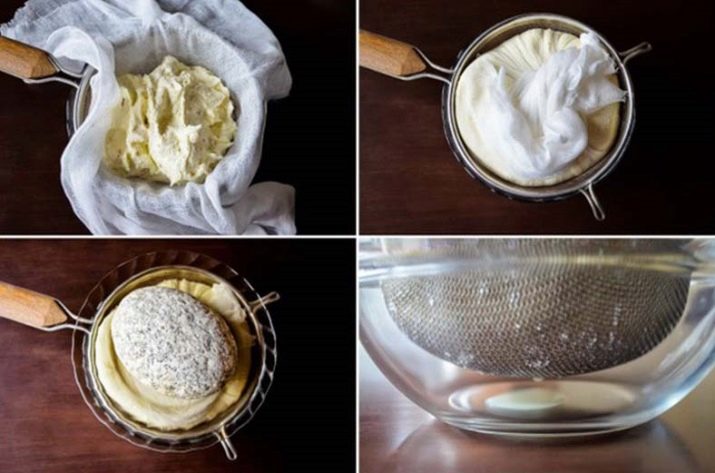
After each use, all accessories must be thoroughly rinsed, dried and stored.
After cooking, the cheese must be allowed to ripen properly, only after that it can be served. It is more advisable to cook at home quick cheeses in cooking and ripening. Having a cheese mold at home and often using it, a delicious and healthy delicacy will always be on the table, and the cooking process will be brought to automaticity and will take up little time. Cooking cheeses at home eliminates the need to find the right type of this product in stores, independence from bans on the sale of imported cheeses will appear.
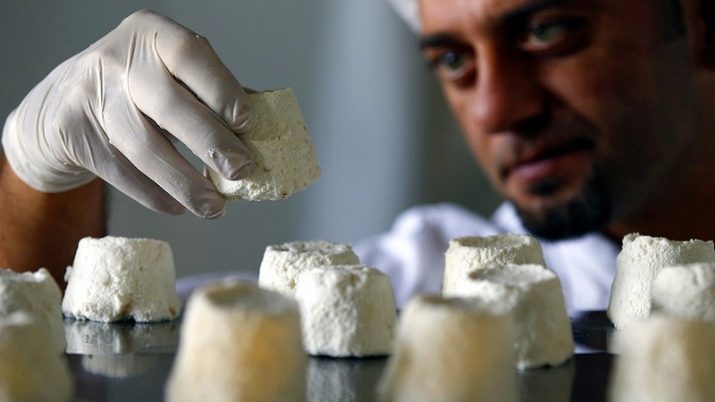
See the following video for tips on choosing and using cheese forms.










